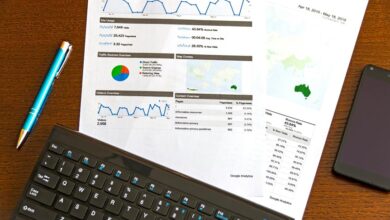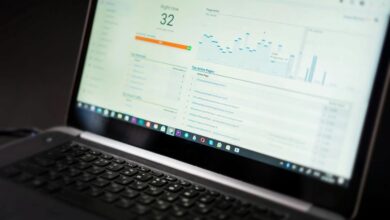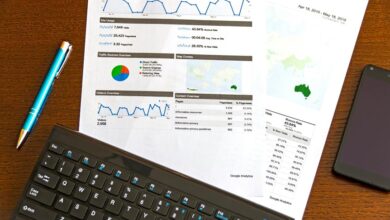Navigating Technology Trends 3278649419

The landscape of technology is evolving rapidly, marked by significant advancements in artificial intelligence, blockchain, and the Internet of Things. Each trend presents unique challenges and opportunities. Ethical considerations in AI, the transparency of blockchain, and the interconnectedness fostered by IoT are critical points of discussion. Meanwhile, the rise in cybersecurity threats necessitates a reevaluation of security measures. As remote work technologies redefine collaboration, one must consider how these trends will shape the future of work.
The Rise of Artificial Intelligence and Machine Learning
As industries increasingly recognize the transformative potential of technology, the rise of artificial intelligence (AI) and machine learning (ML) has emerged as a pivotal development.
Applications range from predictive analytics to smart assistants, enhancing efficiency and decision-making.
However, AI ethics, data privacy, and the automation impact remain critical considerations, particularly in sectors like healthcare where neural networks can significantly influence patient outcomes and operational workflows.
Understanding Blockchain and Its Applications
Blockchain technology represents a transformative approach to data management and security, characterized by its decentralized, transparent nature.
Understanding its foundational principles is essential for analyzing various use cases across industries, from finance to supply chain management.
Furthermore, examining emerging trends will provide insight into the technology’s future potential and its implications for global markets.
Blockchain Basics Explained
While many technologies are reshaping the digital landscape, the concept of blockchain stands out due to its unique properties and potential applications.
Blockchain technology operates on decentralized systems, leveraging digital ledgers and consensus mechanisms. It enables smart contracts and introduces cryptocurrency basics, while addressing challenges of blockchain scalability.
The distinction between private vs public blockchains and tokenization benefits presents both opportunities and regulatory challenges for users.
Use Cases Overview
Understanding the diverse applications of blockchain technology is essential for grasping its transformative potential across various sectors.
It facilitates digital transformation through seamless integration with cloud and edge computing, enhancing data analytics and automation solutions.
Furthermore, blockchain enriches user experience in augmented and virtual reality applications, fostering accelerated tech adoption and integration.
These use cases highlight blockchain’s pivotal role in shaping future technological landscapes.
Future Trends Analysis
As organizations increasingly recognize the potential of decentralized technologies, a myriad of future trends in blockchain applications is emerging.
The intersection of blockchain with quantum computing promises enhanced security measures, while integration with augmented reality can revolutionize user experiences in digital transactions.
These advancements signify a shift towards more transparent and efficient systems, fostering greater autonomy and innovation across various sectors.
The Impact of the Internet of Things (IoT)
The Internet of Things (IoT) increasingly integrates into daily life, significantly enhancing convenience and efficiency across various sectors.
However, this pervasive connectivity introduces substantial security challenges, as the proliferation of devices creates more entry points for potential cyber threats.
Analyzing these dual aspects reveals the complexities inherent in balancing innovation with risk management in an IoT-driven landscape.
IoT in Daily Life
Over 30 billion devices are projected to be connected to the Internet of Things (IoT) by 2030, fundamentally transforming daily life.
The integration of smart home technologies and wearable devices enhances convenience and efficiency, enabling individuals to optimize their environments and health management.
This interconnectedness fosters greater autonomy, allowing users to tailor their experiences while promoting a seamless blend of technology into everyday routines.
Security Challenges Ahead
While the proliferation of IoT devices promises enhanced convenience and efficiency in daily life, it simultaneously introduces significant security challenges.
Data privacy concerns escalate with malware evolution and sophisticated phishing tactics. Organizations must adopt robust security frameworks, conduct regular vulnerability assessments, and develop threat detection mechanisms to combat insider threats.
Compliance regulations further complicate the landscape, necessitating proactive measures to safeguard sensitive information.
Cybersecurity Trends in a Digital World
As organizations increasingly rely on digital infrastructures, the landscape of cybersecurity continues to evolve, presenting both challenges and opportunities. Enhancing cyber hygiene and prioritizing data privacy become paramount. The following table illustrates key trends influencing cybersecurity strategies:
| Trend | Description | Impact |
|---|---|---|
| Ransomware Attacks | Increased frequency and sophistication | Financial loss |
| Remote Work Risks | Vulnerabilities in home networks | Data breaches |
| AI in Security | Automation of threat detection | Enhanced protection |
The Future of Remote Work Technologies
Remote work technologies are poised to shape the future of the workplace, driven by the lessons learned from the rapid shift to digital environments during recent global events.
The evolution of virtual workspaces, enhanced by cloud-based solutions and remote collaboration tools, supports hybrid work models.
Asynchronous work culture and workforce automation trends will redefine employee productivity metrics and remote team engagement, while ergonomic home offices become essential.
Sustainability and Technology: A Growing Relationship
The relationship between sustainability and technology is evolving rapidly, driven by increasing awareness of environmental challenges and the need for innovative solutions.
Green technology emerges as a vital tool for promoting sustainable innovation, enabling businesses to reduce their carbon footprint and optimize resource use.
This synergy not only fosters environmental stewardship but also empowers individuals to embrace more sustainable lifestyles, enhancing overall societal freedom.
Conclusion
As technology trends evolve, a tapestry of innovation weaves together artificial intelligence with ethical considerations, blockchain with transparency, and IoT with enhanced connectivity. Meanwhile, cybersecurity stands as a vigilant guardian against emerging threats, while remote work technologies redefine collaboration and productivity. In this intricate landscape, the thread of sustainability binds these advancements, urging industries to balance progress with responsibility. Thus, the future beckons, inviting a harmonious integration of technology that fosters growth, security, and environmental stewardship.


